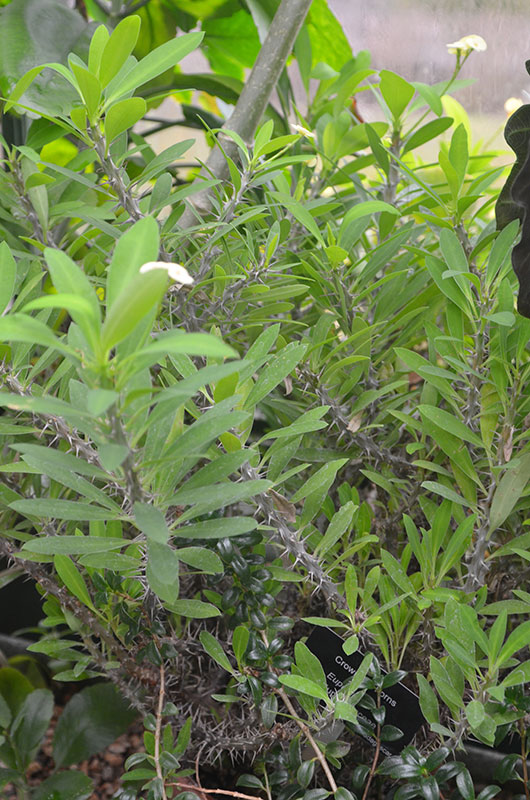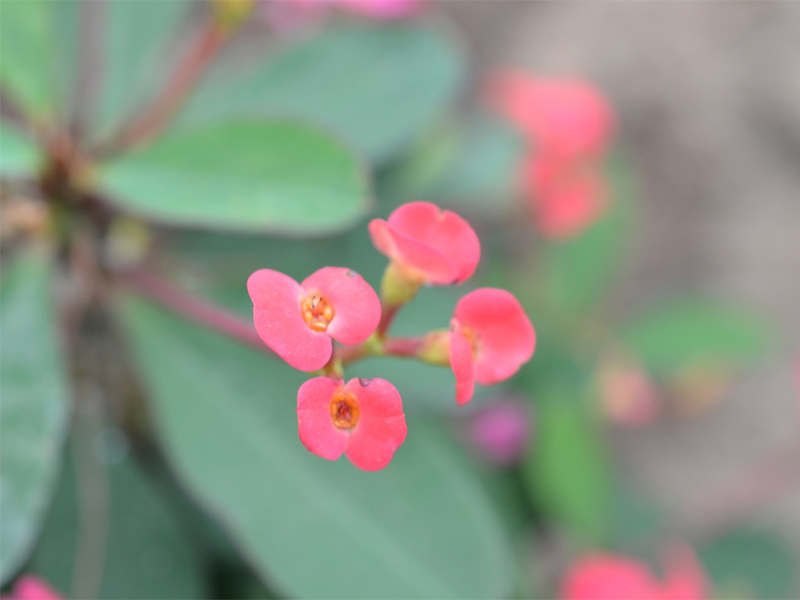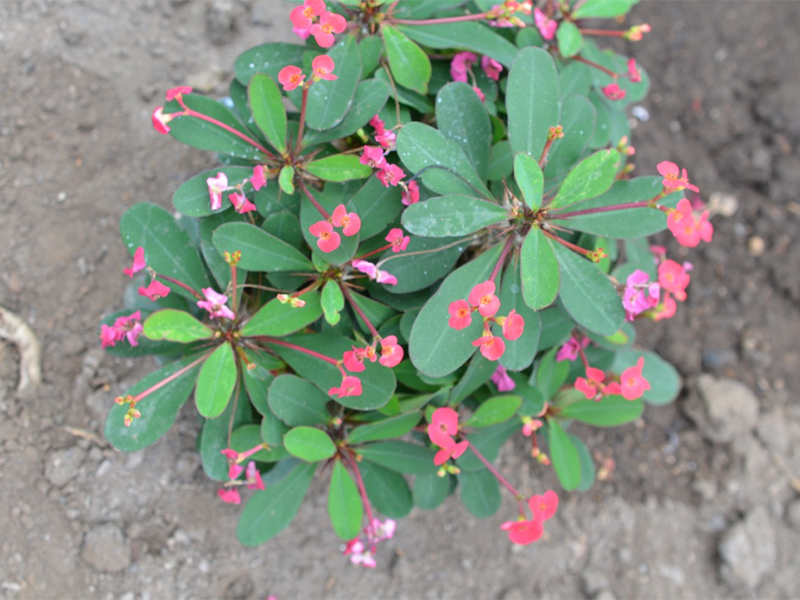| General Description | A woody, succulent shrub with long stems covered in characteristic thorns, fleshy leaves and small flowers made up of two opposite petal-like bracts. |
| ID Characteristic | Wear gloves while handling: thorns are sharp and the latex sap is poisonous. |
| Shape | Low mounding to upright. |
| Landscape | Borders, rock gardens, specimen or container plant. Useful as a low hedge or edging. Grows well indoors. |
| Propagation | Stem cuttings. |
| Cultivation | Grow in full sun with dry to medium moisture in well-draining soils. Plants are tolerant of poor soil including dry, rocky and sandy mediums. They have low tolerance to temperatures below 2° C. Wet soils can be fatal, especially in winter. |
| Pests | Thrips, scale, mites and mealybugs. Leaf spot, botrytis blight, root and stem rot. |
| Notable Specimens | Niagara Parks Botanical Gardens, Niagara Falls, Ontario, Canada.
Centennial Conservatory, Thunder Bay, Ontario, Canada. |
| Habitat | Moist sunny shrublands. |
| Bark/Stem Description | Smooth, glabrous stems covered in thorns. |
| Flower/Leaf Bud Description | Ovate insignificant flower buds at the apex of solitary flowering stems. |
| Leaf Description | Obovate with web-shaped base, fleshy, growing up to 6 cm long. |
| Flower Description | True flowers are inconspicuous and lack both sepals and petals. Each is surrounded by a pair of showy bracts which look like petals. |
| Colour Description | True flowers are greenish-grey. Bracts come in white, yellow or coral pinkish-red. Deep green leaves, medium green flowering stems. |
| Texture Description | Smooth, waxy. |



